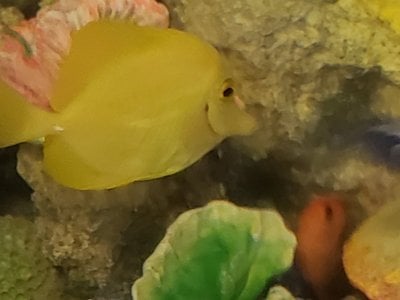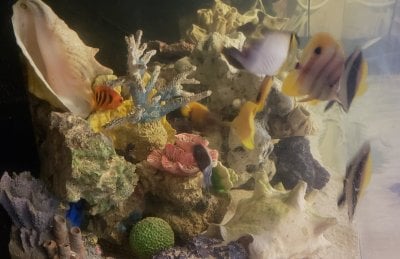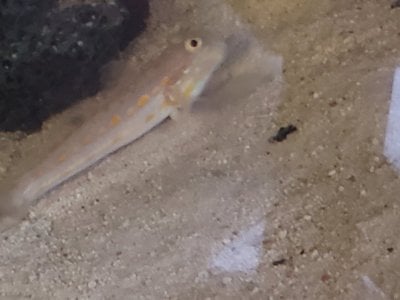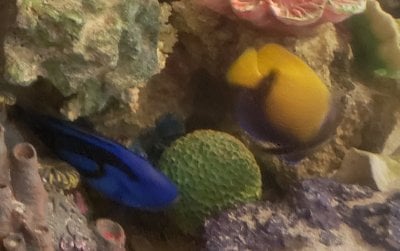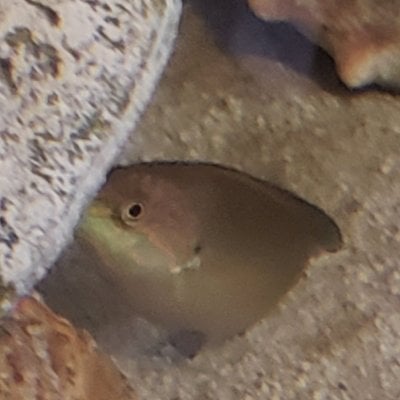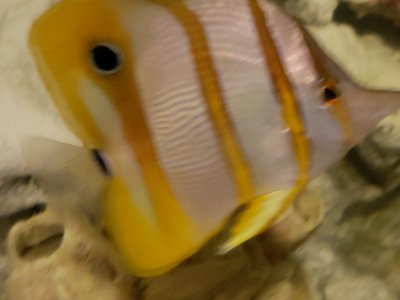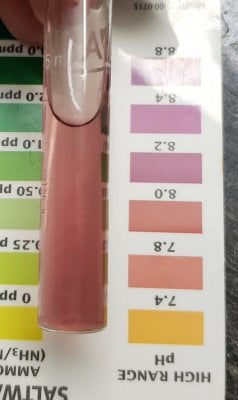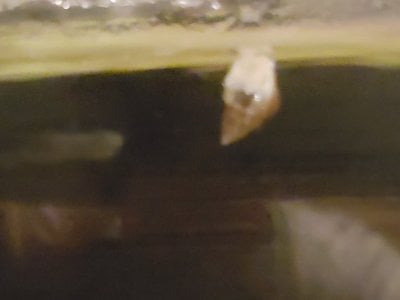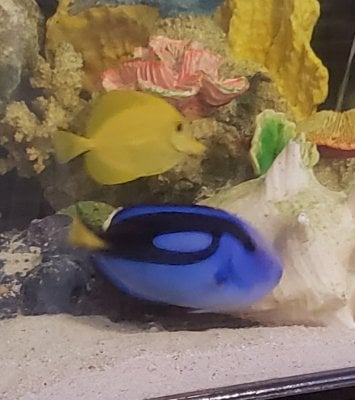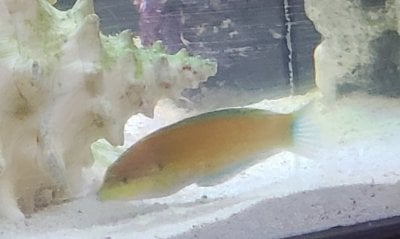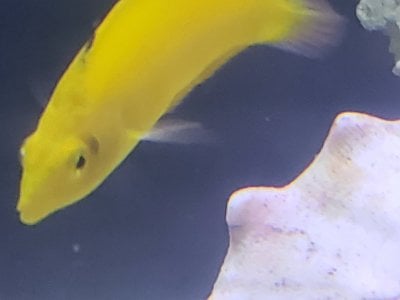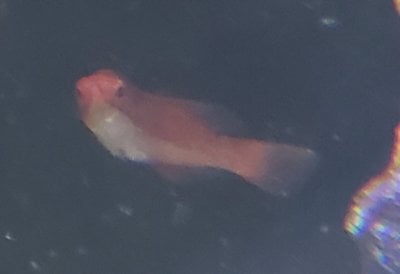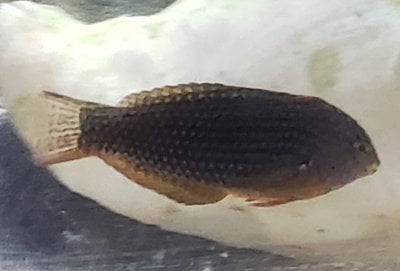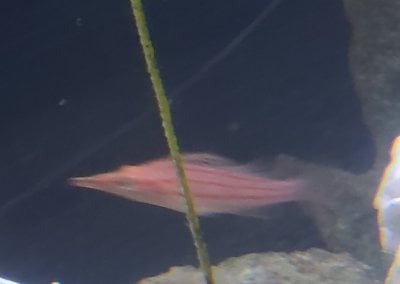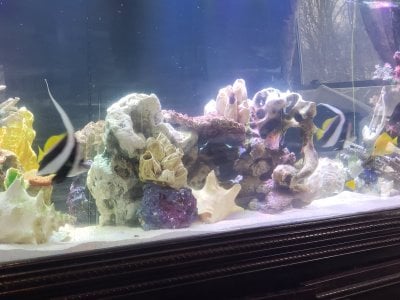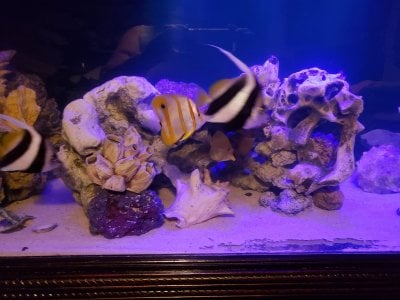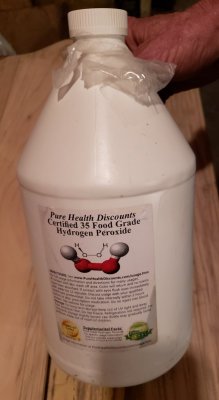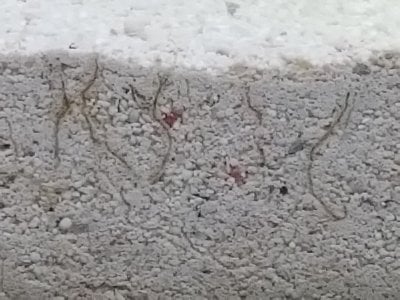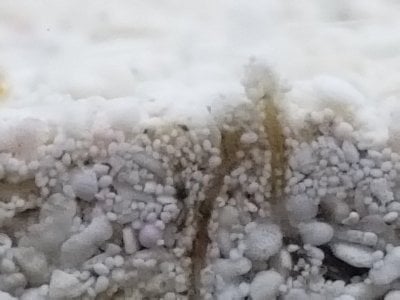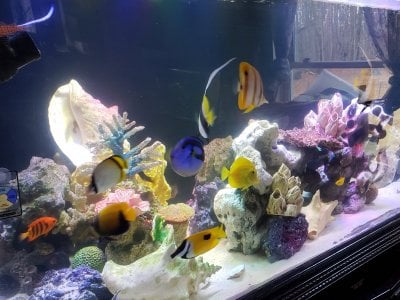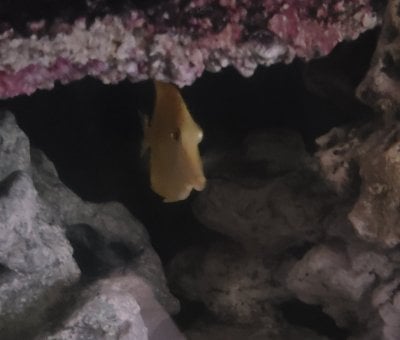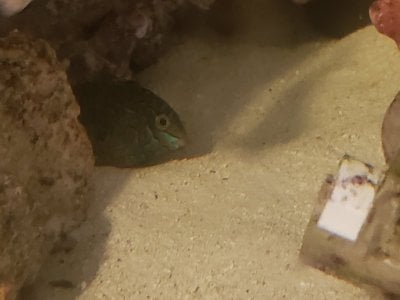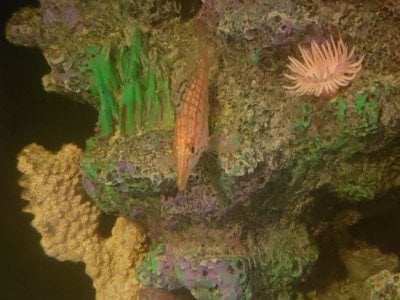- Joined
- Jul 23, 2014
- Messages
- 617
- Reaction score
- 706
Perhaps throw in a black Molly and see if anything pops up. I would keep dosing until I had confirmation. You could be right at the cusp of elimination, but stopping short would give the parasite the opportunity to take hold again. Just my opinion realizing you have a lot at stake.Visual Diary of H202 Dosing in 180 Gallon Saltwater FOWLR Tank (page 14)
Day 8: Dosage remained at 5 cups but was only administered once in the afternoon. Fish are doing well. I think whatever pathogen (suspected velvet) is dead. All seems well. Ammonia is still detected, but it's testing low. I was going to stop dosing H202 today completely, but then worried that some free swimming stage of the pathogen survived and decided to dosed once more at 4: pm. After today, I may stop dosing H202 and just observe. I am hopeful that if this was velvet, it has been eradicated, but only time will tell. If this was black ich (a slight possibility because of the unknown black patches that showed up on the blue spot puffer), than I should probably keep dosing for at least until 11 to 12 days. Still, I'm concerned about over doing H202, so my plan is to just observe after today. All fish for several days now are eating and are not showing symptoms of illness. If any experts here feel this is a bad course of action, please chime in and let me know. #reefsquad @Humblefish Thank you!
I'll update on the 180 gallon tank monthly after today to track progress or possible long term effects of dosing H202 that could show up later.
NOTE: I will continue high dosage of H202 in the puffer sick tank but will only update on progress or setbacks at the end of the puffer's treatment.
Some tentative conclusions:
Pictures
- Some fish seem to handle the highest dosage of 7.2 cups of H202 better than others. For example, my engineer gobiess and wrasses seem to be more stressed and/or more sensitive to the treatment. At the lower dosage of 5 cup they seemed to fair much better and continued eating.
- PH and the biological filtration seems to be effected. PH can be controlled by adding more buffer to the tank and Prime appears to be a safe to control ammonia spikes; however, more research needs to be conducted before a true conclusion should be made as I never heard back from Seachem about the safety of adding their product Prime to a tank with H202 in the water, and I am not a chemist. All I can say for sure is adding Prime to the puffer's tank with H202 in it did not immediately kill the fish.
- I can concur with the OP about the promise of using H202 as a treatment in a FOWLR tank; My yellow tang (on deaths door before starting treatment) was not eating, was super thin, and spent most of it's time in the flow from the power heads before starting treatment appears to have made a full recovery after treatment. The banner fish and Regal tang were still eating but spending half of their time in the flow of power heads have stopped this behavior as well. Other fish in the tank exhibiting symptoms of illness such as hovering at the bottom of the tank, top of the tank, gulping air from the top of the tank, listless behaviors, have stopped exhibiting these behaviors after treatment as well. Only time will tell if the symptoms return now that adding H202 to the tank has been discontinued. If symptoms return, my conclusions are that either the treatment was stopped too soon, or the treatment only 'controls' the pathogens making the fish more comfortable, but does not eradicate them completely. More research needs to be conducted in a scientific setting to positively determine overall effectiveness, exact dosages, lengths of treatments for different pathogens as well as different species of fish, and to determine what effects (if any) using H202 as a treatment for saltwater fish is likely to have on the long term health of the fish.
- I do not advocate any one else try this experiment with their livestock! I entered into the treatment with full knowledge that using H202 as a treatment could cause losses to some or all of my livestock. I adjusted dosages based on observations of my fish and the needs of keeping my biological filtration going, so my dosing schedule cannot be used as a road map for others as everyone's tank and its needs are different. Keep in mind, I may have just been lucky! Still, pending further research, I would agree with the OP that using H202 is a promising alternative to common practices and allows for treating fish in a FOWLR display.
- Yellow tang eating well, active, no symptoms of illness. It appears that the yellow tang is already gaining some weight, though that may be just my wishful thinking as I can't actually weight the fish. It's belly area is expanding though from eating heartily over the last few days. Flame angel was never symptomatic and did not appear affected by the dosing of H202
- Side view of tank=Fish gather together in this corner for breakfast (frozen mix)
- Diamond Goby is out, but I worry it does not have enough food now since the sand is basically sterile now. It is eating frozen mix.
- Regal tang and Majestic Angel are eating, active, and exhibit no symptoms of illness. HLLE on the MA does not appear to be better or worse after H202 dosing. I will continue to observe even though dosing may be discontinued after today.
- Moyer's and Ornate Leopard wrasses as well as the other two wrasses (Pintail and McCosker's) did exhibit stressed type symptoms each dosing, but all seemed to tolerate the lower 5 cup dosage better than the 7.2 cup dosage. They continued to eat throughout the treatment period, though the Ornate wrasse did appear to lose some weight, but not significantly.
- The only fish loss was the Flame Hawkfish before the H202 dosing was initiated. Other expected losses were some snails that I missed pulling before treating the tank.
